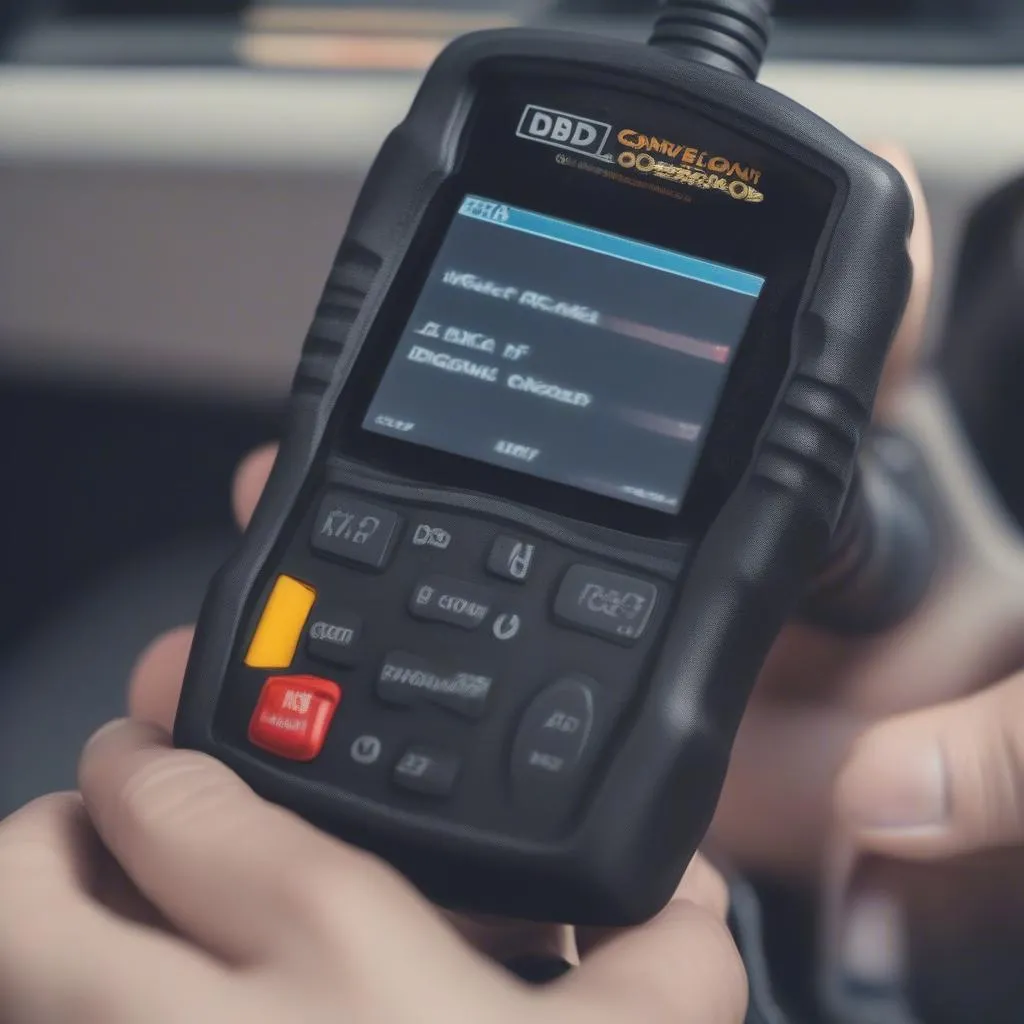Imagine this: You’re cruising down Route 66 in your 1995 Chevy Camaro, wind in your hair, classic rock on the radio, living the American dream. Suddenly, the “Check Engine” light decides to join the party, flashing ominously. Does this mean your dream drive is over? Not necessarily! That little light is just your car trying to talk to you, using a language called OBD1 Diagnostic Trouble Codes. And luckily for you, we’re about to become fluent.
What are GM OBD1 Diagnostic Trouble Codes Anyway?
Think of OBD1 codes like your car’s own Morse code. Before 1996, General Motors vehicles used this system to communicate engine problems. Each code, a combination of letters and numbers, represents a specific malfunction detected by your car’s computer.
From a mechanic’s perspective, these codes are lifesavers. Instead of poking around blindly, they can plug in their diagnostic tool, read the code, and immediately get a clue about what’s going on. It’s like having a direct line to your car’s brain!
Technically speaking, OBD1 systems were less standardized than their OBD2 successors. This means the way you access the codes varies between models. Some cars might have a physical connector under the hood, others might require a paperclip trick on a diagnostic port.
But what about you, the car owner? Understanding these codes can be empowering. They can help you:
- Diagnose simple problems yourself: Maybe it’s just a loose gas cap, and you can avoid an expensive trip to the mechanic altogether.
- Communicate effectively with your mechanic: Knowing the code gives you a starting point for discussion and helps ensure you’re both on the same page.
- Potentially save money: Understanding the severity of the problem can help you make informed decisions about repairs.
Unlocking the Secrets: How to Read and Interpret GM OBD1 Codes
Getting the codes themselves can involve a bit of detective work, depending on your car model. You might need to:
- Consult your owner’s manual: This should be your first stop for information on your car’s specific system.
- Use a code reader: Basic OBD1 code readers are relatively inexpensive and can be purchased online or at auto parts stores.
- Try the paperclip method: This involves jumping specific pins on your car’s diagnostic port. Again, refer to your owner’s manual or a reliable online resource for the correct procedure for your model.
Once you have the code, here’s where the real decoding begins. Let’s break down a few examples:
Code 12: This is a good one! It often means the system is working correctly and ready to display codes.
Code 33: This indicates a problem with your car’s Mass Air Flow (MAF) sensor, which measures the amount of air entering the engine. A faulty MAF sensor can lead to poor fuel economy and performance issues.
Code 41: This signifies an issue with the camshaft sensor, which plays a vital role in ignition timing. Ignoring this code can lead to engine damage.
Remember, these are just a few examples. Numerous resources online provide comprehensive lists of GM OBD1 codes and their meanings.
Common Questions About GM OBD1 Diagnostic Trouble Codes
Here are some questions our readers frequently ask about these cryptic codes:
Can I still drive my car with a code present?
This depends on the code and its severity. Some codes indicate minor issues that might not immediately impact drivability, while others signal serious problems that require immediate attention. If in doubt, it’s always best to consult a mechanic, especially if you notice performance issues or warning lights besides the “Check Engine” light.
Can I reset the codes myself?
Yes, usually by disconnecting the battery for a short period. However, this is only a temporary fix. The code will return if the underlying problem isn’t addressed.
Are OBD1 codes universal for all GM vehicles?
While the general principles are similar, there can be variations in code definitions and diagnostic procedures between different GM makes and models. Always refer to information specific to your car.
Need a Hand? We’re Here to Help!
Dealing with car troubles can be frustrating, but you don’t have to face them alone. At Tech Car USA, we’re passionate about empowering car owners with knowledge. We offer a wealth of resources on our website, including articles on various OBD codes and diagnostic procedures.
Still feeling lost? Don’t hesitate to reach out to us on WhatsApp at +84767531508. Our team of expert mechanics is available 24/7 to provide personalized assistance, whether you need help interpreting a code, finding the right diagnostic tools, or tackling repairs.
Don’t Let Codes Rain on Your Parade
Remember, that “Check Engine” light might seem intimidating, but it’s really just your car trying to communicate. By learning to understand GM OBD1 codes, you can become a more informed and confident car owner. So, the next time that light flashes, take a deep breath, grab your code reader, and remember – knowledge is power!
Want to learn more about specific OBD1 codes? Check out our other articles:
Don’t forget to share your OBD1 experiences and questions in the comments below! We love hearing from our readers.
 OBD1 Code Reader
OBD1 Code Reader
 Classic Car on Route 66
Classic Car on Route 66